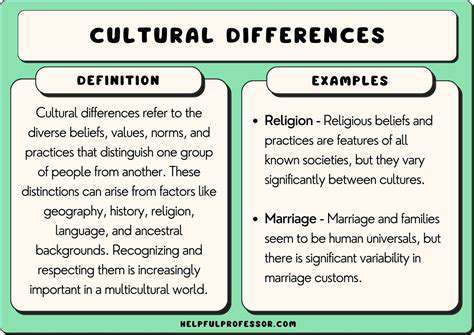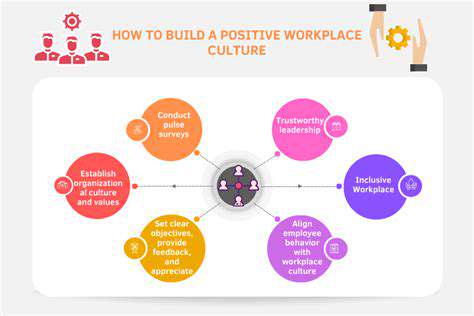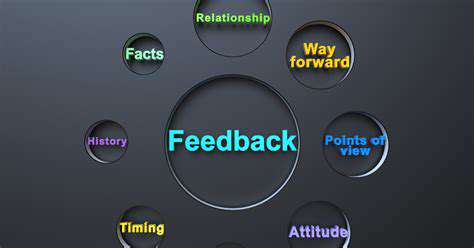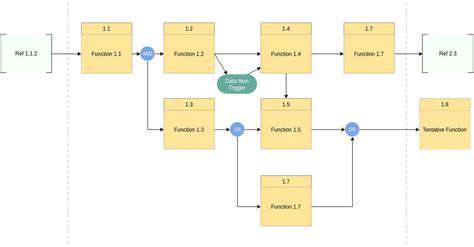Guide to Understanding Workplace Culture
Defining the Essence of Workplace Culture
Workplace culture isn't simply a trendy phrase; it's the complex interplay of shared values, beliefs, behaviors, and attitudes that shape the daily experiences of employees. It's the invisible glue that binds a team together, fostering a sense of belonging and influencing everything from productivity and innovation to employee retention and overall job satisfaction. Understanding its multifaceted nature is crucial for creating a positive and thriving work environment.
It's more than just the company's mission statement or the perks offered; it's the unspoken rules, the norms, and the traditions that employees absorb and, consciously or unconsciously, adhere to. This understanding requires a keen awareness of the subtle nuances of communication styles, decision-making processes, and interpersonal dynamics that define a company's unique character.
The Impact of Culture on Employee Experience
A strong, positive workplace culture significantly impacts employee experience. Employees who feel valued, respected, and part of a supportive team are more likely to be engaged, motivated, and productive. Conversely, a toxic or unsupportive culture can lead to decreased morale, high turnover rates, and a general sense of dissatisfaction, ultimately harming the company's overall performance.
Key Components of a Healthy Workplace Culture
Several key elements contribute to a healthy and thriving workplace culture. Open communication channels, fostering trust and transparency, are essential. Fair and equitable treatment of all employees, regardless of background or role, is paramount. A culture that encourages collaboration and teamwork helps employees feel connected and supported. Furthermore, clear expectations, consistent feedback, and opportunities for growth and development are vital aspects of a positive work environment.
Recognizing and Addressing Cultural Challenges
Despite the best intentions, workplace cultures can develop challenges. These can manifest as issues with communication, lack of diversity and inclusion, and a lack of clear values. Identifying and addressing these challenges requires proactive measures, including regular feedback mechanisms, employee surveys, and fostering a culture of open dialogue. Creating a safe space for employees to express concerns and suggestions is crucial for continuous improvement.
Cultivating a Positive and Inclusive Culture
Cultivating a positive and inclusive workplace culture is an ongoing process that requires commitment and consistent effort from leadership and all employees. Implementing diversity and inclusion initiatives, promoting work-life balance, and recognizing individual contributions are essential steps in fostering a supportive and equitable environment. Regular training and awareness programs can further enhance cultural sensitivity and understanding, creating a workplace where everyone feels respected and valued.
Identifying the Key Components of a Healthy Workplace Culture
Defining a Healthy Workplace Culture
A healthy workplace culture isn't just about having comfortable break rooms and ping-pong tables. It's a dynamic environment built on shared values, mutual respect, and a commitment to employee well-being. This encompasses everything from clear communication channels and fair policies to opportunities for professional development and a sense of belonging. A truly healthy culture fosters collaboration, innovation, and high performance by recognizing and rewarding individual contributions while prioritizing the collective success of the team.
Understanding the core principles of a healthy workplace culture is crucial for creating an environment where employees feel valued, supported, and motivated. This involves recognizing the importance of trust, open communication, and a sense of shared purpose. Ultimately, a healthy culture leads to increased employee engagement, reduced stress, and improved overall productivity.
Key Components Contributing to a Positive Culture
Several key elements contribute significantly to a positive workplace culture. Transparency in decision-making processes, coupled with clear expectations and consistent feedback, fosters trust and accountability. Respectful communication, both verbal and non-verbal, is paramount. This includes active listening, empathy, and constructive feedback mechanisms. Providing opportunities for professional growth, whether through training programs, mentorship opportunities, or career advancement pathways, demonstrates a commitment to employee development and satisfaction.
A supportive and inclusive environment where diverse perspectives are valued and respected is also crucial. This includes policies and practices that promote diversity and inclusion, encouraging open dialogue about challenging issues, and providing resources for employees to feel heard and understood. A healthy workplace culture actively addresses issues of bias and discrimination, fostering a sense of belonging for everyone.
Finally, recognizing and rewarding employees for their contributions, both big and small, is essential for fostering a positive and motivating work environment. This can include formal recognition programs, team-building activities, or simply acknowledging individual achievements. Celebrating successes builds morale, promotes collaboration, and encourages continued high performance.
The Impact of Culture on Overall Performance
A strong and positive workplace culture isn't just a feel-good factor; it significantly impacts the overall performance and success of a company. A culture of collaboration and innovation fosters creativity and problem-solving, leading to higher levels of productivity and improved project outcomes. When employees feel valued and respected, they are more likely to be engaged and committed to their work, which leads to reduced absenteeism and higher retention rates.
A healthy workplace culture also contributes to a more positive and productive work environment. This leads to better team dynamics, stronger relationships, and a decrease in conflict. Moreover, a positive culture attracts and retains top talent, which is crucial for long-term success in today's competitive market.

Cultivating a Positive Workplace Culture: Strategies for Success

Fostering a Culture of Appreciation
A positive work environment is built on the foundation of appreciation. Regularly acknowledging employees' contributions, no matter how small, can significantly boost morale and motivation. This could involve verbal praise, written thank-you notes, or even small tokens of appreciation. Creating a culture where employees feel valued and recognized for their hard work is essential for long-term success.
Implementing a system for peer-to-peer recognition can also be a powerful tool. This empowers employees to celebrate one another's achievements, fostering a sense of community and shared success. Encouraging employees to express gratitude to colleagues can also strengthen relationships and enhance team dynamics.
Promoting Open Communication
Open communication channels are crucial for a positive workplace. Creating a safe space where employees feel comfortable sharing their ideas, concerns, and feedback is essential for problem-solving and innovation. Regular team meetings, one-on-one check-ins, and anonymous feedback mechanisms can all contribute to a more transparent and communicative environment.
Encouraging Collaboration and Teamwork
Collaborative projects and team-building activities foster strong relationships and shared goals. Encouraging teamwork not only improves efficiency and productivity but also creates a sense of belonging and camaraderie within the workplace. By actively organizing team-building exercises, you can boost employee engagement and create a stronger sense of unity.
Promoting a culture that values diverse perspectives and encourages collaboration will lead to innovation and problem-solving. This means creating opportunities for different teams to interact and share ideas.
Managing Conflict Constructively
Conflict is inevitable in any workplace, but how it's managed significantly impacts the overall atmosphere. Implementing clear conflict resolution protocols and providing adequate training for managers on conflict resolution techniques is vital. This can involve establishing mediation processes or providing resources for employees to address concerns constructively.
Providing Opportunities for Growth and Development
Investing in employee growth and development demonstrates a commitment to their future within the company. Offering training programs, mentorship opportunities, and chances for advancement are essential for employee engagement and satisfaction. This fosters a sense of loyalty and motivates employees to perform their best.
Recognizing and Rewarding Excellence
Acknowledging and rewarding outstanding performance is a powerful motivator for employees. Formal recognition programs, bonuses, or promotions can significantly boost employee morale and create a competitive atmosphere that encourages continuous improvement. Implementing a structured system for recognizing outstanding work will encourage high standards and motivate employees to reach their full potential.
Maintaining a Healthy Work-Life Balance
Recognizing the importance of work-life balance is crucial for employee well-being and productivity. Offering flexible work arrangements, encouraging time off, and promoting a healthy lifestyle can dramatically reduce stress and burnout. This ultimately leads to a more engaged and productive workforce. Implementing policies that support employees' personal lives is essential for a positive workplace atmosphere.








![Guide to Learning About [Specific Historical Period]](/static/images/31/2025-06/TheGrowthofCitiesandUrbanization.jpg)


